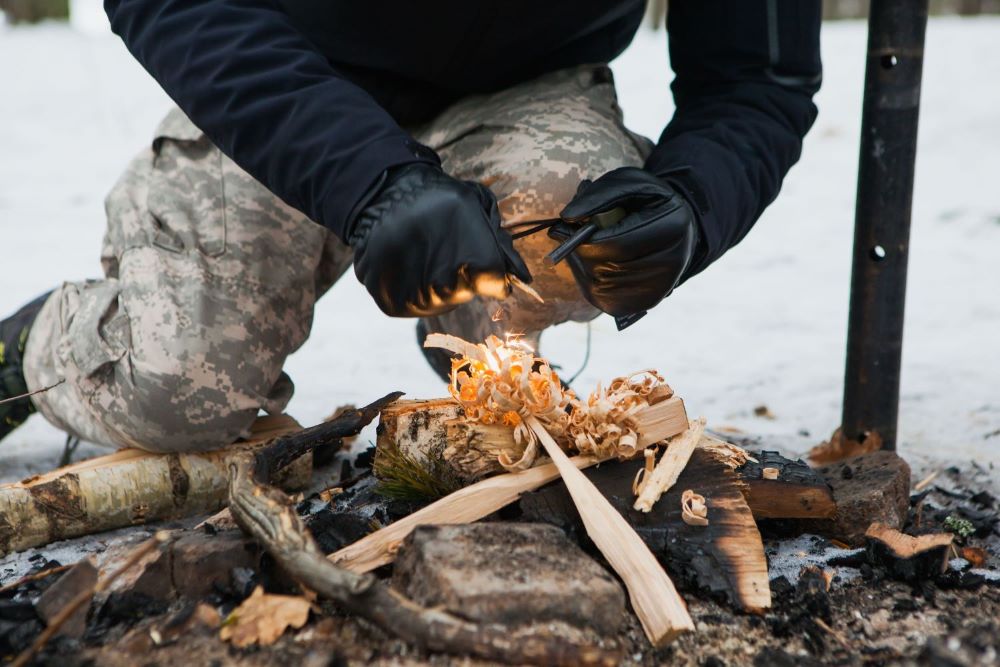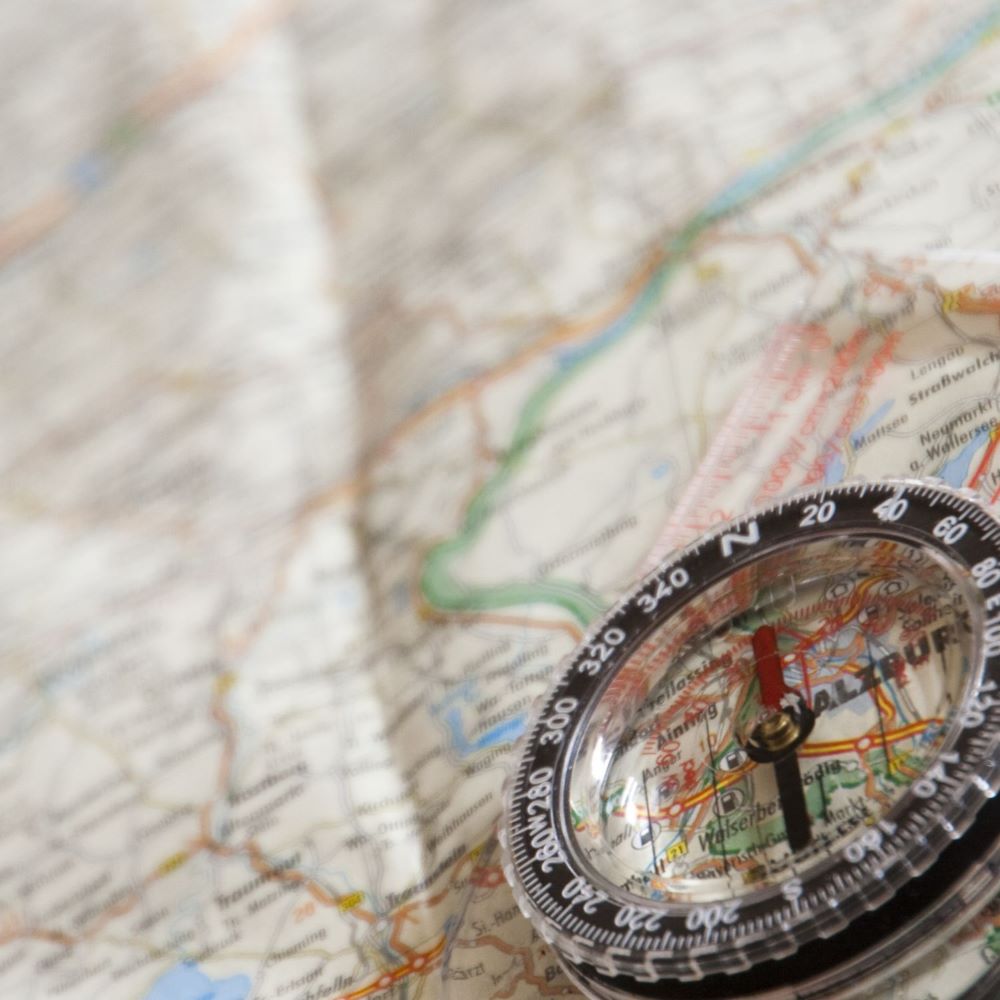
Wilderness Survival
By Dustin Flynn
Wilderness survival can be a tricky situation to prepare for, and with the many different types of outdoor enthusiasts, all with varying levels of knowledge, experience, and tools, it will require extreme personalization in order to support success. So, instead of trying to decipher each specific situation or generalize strategies for different environments, we have decided to put together four tips for surviving in the wilderness that will be important for all outdoor enthusiasts. No matter if you are an avid day hiker or a backpacking hunter headed out for a weeklong trip to the bush, these tips will be applicable and helpful if you find yourself needing to survive in the wilderness.
Getting in the right mindset

Having the right mindset in overly stressed situations can be the difference between life and death. When thirty-eight-year-old hiker Joshua McClatchy was rescued after becoming lost for six nights in the Arkansas wilderness, he told reporters that the journey had been “more mental than physical” and that he had to “be mentally conscious to not allow [his] mind to play tricks on [him].” He contributed his survival to his level of positivity and his ability to stay calm to conserve energy and make good choices, choices that eventually lead to his rescue. When seventy-seven-year-old Carol Kiparsky and seventy-two-year-old Ian Irwin were rescued after nine days lost in the wilderness near Tomales Bay, they admitted they were completely unprepared, but they never lost hope. They kept their spirits high and rejoiced at the little things like being able to drink out of a puddle or when they found insects to eat under rocks. These are both great examples of getting in the right mindset in order to help pull yourself out of these situations. So understand, if everything goes wrong, you are lost, hurt, and hungry, stay positive, and find positivity. If there is anything to be happy about, don’t brush it off, take it as a gift and smile. It sounds ridiculous, but it can save your life. “Choose to be optimistic, it feels better.” – Dalai Lama
Survival kit waterproofing
You have contemplated your scenarios, listed out the gear you need, and spent your money. Now you are prepared, right? Nope. Just like the other keys of wilderness survival, having the gear is only part of being able to survive. How you pack and store that gear can also be a huge deciding factor on whether you get out of your stressful situation alive. Water is a large survival factor for humans, but it is absolutely detrimental to most of the items found in many enthusiasts’ survival kits. Knives, saws, and multitools will rust, medical gear like gauze and bandages will mold, matches and lighters will fail and extra layers will be rendered useless if soaked. That’s why it is important to look at waterproofing materials as another essential piece of gear that should be used redundantly. That means if you are waterproofing the main compartment of your survival kit with a large waterproof bag, you should also be individually waterproofing every item that goes in with zipper-type bags to ensure safety against water. This will not only give you protection, but it also allows you the opportunity to use those smaller bags to collect water for drinking or for gathering natural fire lighting materials without issue. They can double as boot liners, chest seals, and so much more; the possibilities are endless.
The Universal Edibility Test
 The Universal Edibility Test (UET) is a highly recommended procedure for those who face starving during a survival situation. If you are unfamiliar with the plants around you or you are so hungry that you find yourself confused about whether the plants you have gathered are what you think they are or not, the UET will aid you in ultimately deciding whether to eat what you have or not. The UET is highlighted in four processes – separate, contact, cook, and taste – and is broken down into thirteen steps. Follow and familiarize yourself with the steps in the image provided to test the edibility of plants for survival purposes.
The Universal Edibility Test (UET) is a highly recommended procedure for those who face starving during a survival situation. If you are unfamiliar with the plants around you or you are so hungry that you find yourself confused about whether the plants you have gathered are what you think they are or not, the UET will aid you in ultimately deciding whether to eat what you have or not. The UET is highlighted in four processes – separate, contact, cook, and taste – and is broken down into thirteen steps. Follow and familiarize yourself with the steps in the image provided to test the edibility of plants for survival purposes.
Land navigation

Basic land navigation skills can go a long way in keeping you from getting into too much trouble. This starts with proper planning by collecting local maps and satellite images to help you get a bird’s eye view of areas you will be traveling, no matter the distance or circumstance. Keep in mind any obvious landmarks or terrain that can be used during your trip to quickly identify where you are, and mark them as checkpoints along your route to keep you moving in the right direction. Frequently check your map while traveling to consistently.
These are just a few general tips to aid the many types of outdoor enthusiasts in surviving in the wilderness. Applying these tips to your already-in-place knowledge, experience and skill level will help you to stay safe and get home. Get the right training, practice your skills, and prepare fully for the situations you find yourself in. And most of all, enjoy yourself and get outside!verify where you are. This step seems cumbersome but is totally worth it when you think about the possibility of getting hurt and needing someone to help you out of where you are. Get a compass and know how to use it; when traveling in thick ruffage or overgrown wooded areas, it can be easy to get turned around and discombobulated. Having a compass to pair with a good map and an understanding of your terrain can help get you out of most places you are in. Finally, remember to make copies of your maps and images and share them, and your traveling agenda, with someone you trust in case you get lost and lose the ability to communicate with possible rescuers.



